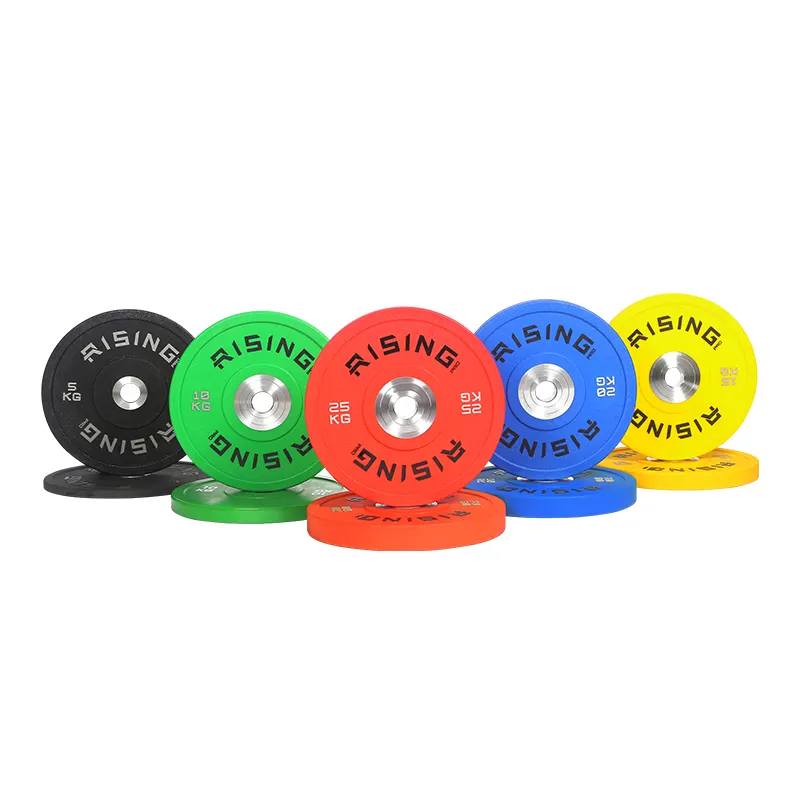Impact of Upgraded EU Environmental Regulations on Fitness Equipment
Recent amendments to European Union (EU) environmental laws have brought about a number of important changes for fitness equipment manufacturers. These modifications are fundamentally oriented towards a more sustainable industrial manufacturing practice and a lesser environmental impact. But these laws present a number of challenges of compliance to gym equipment vendors. Firstly, having to comply with them could itself involve a resource re-allocation hurdle, something that could prove challenging particularly for smaller suppliers with squeezed budgets and/or resources. Moreover, determining the costs of adaptation may prove to be particularly difficult, as it requires projections of potential outlays for research, development, new equipment, and changes in production methods. Another continuing problem is the inconsistent interpretation and enforcement of these regulations between EU member states, which can mean suppliers operating in multiple territories face another patchwork of rules and additional obstacles. The EU is establishing a climate-neutral economy by 2050, claims European Environment Agency, which affects businesses in all domains, along with Europe fitness equipment industry. Coming into compliance with such laws, while dealing with variations among regions, can be intricate navigating, depending on savvy and adaptation.
Benefits of Aligning with New Sustainability Standards
Adopting today's new sustainability standards can be advantageous for fitness equipment vendors. First, companies who engage in green acts can greatly boost their brand standing. With consumer tastes moving towards sustainability, eco-friendly companies tend to be more favorably reviewed while also appealing to a rising proportion of the kind of customer that is environmentally aware. This transition in consumer preference can be a market share gaining one: people are picking brands that fit with their values. But cost savings are not the only tangible benefit of being sustainable, often through better energy efficiency and tighter operations. Reducing energy use and incorporating environmentally friendly resources allow companies to reduce operational costs and show a social commitment.
A look at the real world illustrates the benefits of these standards for companies as well. Facilities such as Healthtrax Fitness & Wellness-some examples-also realized very real savings on energy bills as a result of electricity and fuel-efficient lighting and equipment retrofits, expediting the payback on their investments (Liane Cassavoy, Club Business International). This demonstrates not only a dedication to sustainability but shows that consumers prefer companies that are positive contributors to the ecosystem. In this climate in which companies that contribute only to environmental damage may find themselves at a disadvantage, a baby step toward establishing industry-wide standards marching in the opposite direction—actually more many steps forward—might well be a canny move by businesses in the highly competitive fitness gear business.
Understanding Eco-Certification Requirements for Fitness Gear
Common Environmental Standards in the EU Market
In the market of the European Union, some environmental criteria are of particular importance for fitness equipments. Prominent amongst these are ISO 14001, RoHS, REACH. ISO 14001 Resources ISO 14001 outlines a framework for an Environmental Management System (EMS) and the issues and challenges relating to an environmental management system are underpinned by the need to demonstrate continuous improvement in environmental performance. The (Restriction of Hazardous Substances) limits the use of certain hazardous substances in electrical and electronic devices, such as sport and fitness equipment. Another important regulation is REACH (Registration, Evaluation, Authorisation and Restriction of Chemicals) which aims a safe using of chemicals to protect human health and the environment. Adherence to such standards is critical not only to safeguard the consumer and environment protection, but also for market access in the EU. Compliance with these directives is reported to greatly improve the market profile of a company and opendoors to new markets for business, providing companies with an edge in a marketplace that is growing in its environmental awareness.
How to Verify Supplier Certifications Effectively
Confirming the date certifications for suppliers are issued is essential to achieving green standards. And I do that in a very systematic way. First of all...I ask for certifications in which we can compare names and see it is a legitimate certification like TUV or Intertek... It’s important to verify the authenticity and expiration date of these documents. Next I will cross double check the provided info in reliable databases (like ECHA for REACH) or national registers for RoHS. In addition I also use professional verification service that are experts in Verification of certificates, and also investigating supplier’s history. Among the key red flags to watch for are gaps in a contractor’s records, refusal to provide details, and inconsistent compliance history. By paying attention to these measures, it is more likely that we can rely that our suppliers comply with the environmental standards. And with the growing shift towards sustainability coupled with the tightening regulations in the EU market, it’s imperative for those of us in the fitness industry to stay on top of the environmental certifications relevant to fitness swag.
Strategies for Sourcing Environmentally Friendly Fitness Equipment
Leveraging Green Business Directories and Trade Networks
Green business directories and trade networks can be excellent sources of eco-friendly fitness equipment. These sites list suppliers with a greener ethos, and provide eco-friendly products that already meet European regulations regarding the environment: sistersite.comDIRECTORY. For example, the Green Good Directory lists suppliers across multiple sectors, such as fitness products. Through accessing such resources, businesses not only can seek out trustworthy partners, but organise collective bargaining and benefit from collective resources to increase competitive advantages. How to Use These Directories and Trade Networks To make the most of these directories and trade networks, I recommend:
1. Regularly reviewing updated listings for new suppliers that meet eco-certification standards.
2. Joining specialized trade networks that focus on sustainable products to benefit from shared knowledge and collective efforts.
3. Leveraging advanced search tools offered by these platforms to filter suppliers by compliance standards and certifications.
Attending Sustainable Fitness Expos in Europe
Other useful methods to meet environmentally friendly fitness equipment providers include visiting European sustainable fitness expos. These are great opportunities to network, see what’s new and stay ahead. One of the main expos for the health and fitness industry is a lifefood-funded "ecoexpo" featuring eco-company stands from all over Germany plus FIBO Global Fitness and the Sustainable Fitness Expo in Amsterdam both have a focus on showcasing the latest conscientious fitness trends in technology. Attendees frequently tell us they learned about the newest products and developed new business contacts. Industry pundits point to the following as the reasons to attend:
1. Networking with top-tier suppliers and other industry professionals dedicated to sustainability.
2. Exploring cutting-edge products that comply with environmental standards.
3. Engaging in workshops and seminars that provide deep dives into current eco-trends and regulations.
Testimonials from previous attendees highlight the transformative impact these expos have on business strategies and product sourcing decisions. By considering these avenues, businesses can make informed choices aligned with the expectations of environmentally conscious consumers.
Evaluating Supplier Sustainability Beyond Certifications
Assessing Manufacturing Processes and Energy Use
When considering the fitness equipment suppliers of green fitness equipment, a review of their production is indispensable. A related focus should be on how energy and waste are both consumed and managed, and the extent to which these methods are in line with sustainability objectives. Aspects such as energy efficiency and waste reductions can be assessed using tools like the Global Reporting Initiative (GRI). These sustainable sorts of details do not only care for the planet-- but promote financial success as well. According to experts, moving toward more sustainable manufacturing can generate long-term cost savings and enhance a company’s competitive position in the marketplace, which is increasingly demanding eco-friendly products. For example, converting to more eco-friendly sources of energy can result in significantly lower operating expenses in the long run.
Importance of Supply Chain Transparency
Supply chain transparency is of importance when validating environmental claims and trust is crucial with stakeholders. With full traceability down their supply chains, companies can ensure that every part of what they make meets environmental requirements. This is where technologies such as blockchain come in; enabling immutable records of transactions and processes that add transparency and accountability. Companies such as Patagonia have capitalised on transparency in this way to transform and bolster their PR — being able to demonstrate consistent supply chain standards, and they don’t shy away from their status as market leaders in sustainability. Their example illustrates how transparency can increase brand loyalty and appeal to environmentally-minded customers who are central to a sustainable business model.
Case Study: Successful Partnerships with Green Fitness Suppliers
How SportsArt Became a Leader in Eco-Conscious Equipment
Through their dedicated road and commitment to eco-fitness, SportsArt is leading the way for the future of eco-friendly training equipment. Their road to an industry leading business followed tough adherence to environmental certifications and designed innovations oriented to minimize ecological footprint. By incorporating advanced sustainability features and socially responsible framework into product categories, SportsArt has been the vanguard of “green” issue within the industry. Through collaboration with key strategic partners the latest technological advances are applied to their products, resulting in both options and energy efficiency and reduced resource consumption. In testament to their fruitful partnerships, SportsArt is able to claim compelling statistics demonstrating significant business expansion due to these sustainable partnerships. This growth is apparent not only in market success, but also in the power of aligning with environmentally sound suppliers to create long-term success, and very much establishing SportsArt as a company that can deliver more by making the global environment a better place, while still outperforming competitors.
FAQ
What are the challenges of meeting the new EU environmental regulations?
The challenges include a reassessment of resource allocation, estimating adaptation costs, and coping with varying interpretations and implementations across different member states.
How can fitness equipment suppliers benefit from adhering to these new sustainability standards?
Fitness equipment suppliers can enhance their brand reputation, attract environmentally conscious customers, and achieve cost savings from improved energy efficiency and streamlined operations.
Which environmental standards should suppliers be aware of in the EU market?
Suppliers should be aware of ISO 14001, RoHS, and REACH, which are crucial for ensuring consumer safety, environmental protection, and gaining market access within the EU.
How can businesses verify their suppliers' certifications?
Verification can be done by examining documentation from recognized entities, cross-checking with trusted databases, and using professional verification services.
What are some strategies for sourcing environmentally friendly fitness equipment?
Strategies include leveraging green business directories, joining specialized trade networks, and attending sustainable fitness expos in Europe.
Table of Contents
- Impact of Upgraded EU Environmental Regulations on Fitness Equipment
- Benefits of Aligning with New Sustainability Standards
- Understanding Eco-Certification Requirements for Fitness Gear
- Strategies for Sourcing Environmentally Friendly Fitness Equipment
- Evaluating Supplier Sustainability Beyond Certifications
- Case Study: Successful Partnerships with Green Fitness Suppliers
-
FAQ
- What are the challenges of meeting the new EU environmental regulations?
- How can fitness equipment suppliers benefit from adhering to these new sustainability standards?
- Which environmental standards should suppliers be aware of in the EU market?
- How can businesses verify their suppliers' certifications?
- What are some strategies for sourcing environmentally friendly fitness equipment?


